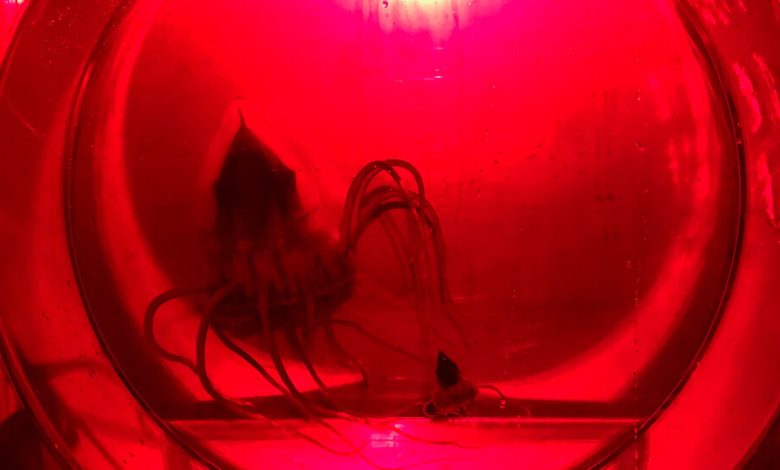Mucus-Covered Jellyfish Hint at Dangers of Deep-Sea Mining

A treasure trove of metal is hiding at the bottom of the ocean. Potato-size nodules of iron and manganese litter the seafloor, and metal-rich crusts cover underwater mountains and chimneys along hydrothermal vents. Deep-sea mining companies have set their sights on these minerals, aiming to use them in batteries and electronics. Environmentalists warn that the mining process and the plumes of sediment it would dump back into the sea could affect marine life.
A series of shipboard experiments on jellyfish in the Norwegian fjords, published Tuesday in the journal Nature Communications, offer insights into those warnings. The scientists approximated the effects of mining by pumping sediment into the jellies’ tanks, essentially asking how the animals would cope with the muddy water. The answer? Not well.
The researchers selected helmet jellyfish as their research subjects because of the ubiquity and hardiness of the dinner-plate-size creatures. The idea was to choose an organism that the team could easily get hold of “and then expose it to conditions that we expect in the mid-water in the open ocean,” said Helena Hauss, a marine ecologist at the Norwegian Research Center who conducted the study while working at the GEOMAR Helmholtz Center for Ocean Research Kiel in Germany.
The jellies, which are found around the world in waters 1,500 to 2,000 feet deep, serve as representatives of the countless soft-bodied animals living in the open ocean that could be affected by mining.
The scientists caught the jellyfish, which are abundant in Norway’s fjords, with fine mesh nets and brought them below deck of their research vessel for study in dim rooms illuminated with red light.
“They really are adapted to live in eternal darkness,” said Vanessa Stenvers, an author of the paper and a doctoral candidate at GEOMAR. “And that’s why we had to be very careful when we observed and we always had to use red light to not disturb them.”
The scientists exposed the jellies to plumes of sediment comparable to what they might experience around deep-sea mining sites. One response from the jellyfish was visible to the naked eye. They tried to rid themselves of the sediment by producing excess mucus, in white ropes that Ms. Stenvers likened to frosting.
Other stress responses occurred at the molecular level, with several genes associated with tissue repair and the immune system becoming active.
“One thing that worries me is that everything that these animals do to rid themselves of sediment or combat pathogens, it takes energy,” Dr. Hauss said. In the deep ocean where the jellyfish live, food is scarce, and dealing with the effects of muddy water might require more energy than the jellies can obtain from their diet. “It could lead to starvation, it could lead to lower reproduction rates,” Dr. Hauss said.
Jeffrey Drazen, a marine biologist at the University of Hawaii at Manoa who was not involved with the research, said that “this is a really welcome study” in light of the likelihood that deep-sea mining will release large amounts of sediment. “This is really the first study that has looked at a water column animals’ response to mud,” he said.
Dr. Drazen noted that the species the researchers chose for the study was hardier than many of its relatives. “This is a really robust jellyfish. You can catch this thing in a net and it doesn’t turn into goo,” he said, and its stress response to the sediment indicates that other soft-bodied sea creatures exposed to sediment for longer periods of time might fare even worse.
According to the researchers, their findings suggest that deep-sea mining could negatively affect not only marine life, but human life as well. Midocean animals like helmet jellyfish contribute to a biological cycle that keeps stores of carbon in the deep and not in the atmosphere. And fish that humans rely on for food, like tuna, feed on these midocean communities.
“It’s very important to us, even on land, even though we don’t deal with it on an everyday basis,” Ms. Stenvers said. The good that the open ocean does for our planet “could be lost if we don’t protect it.”



